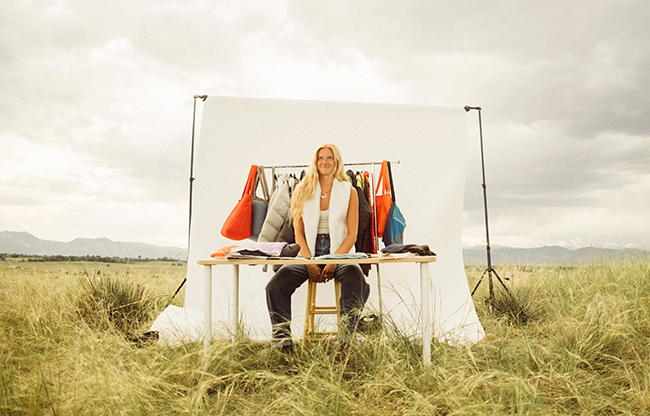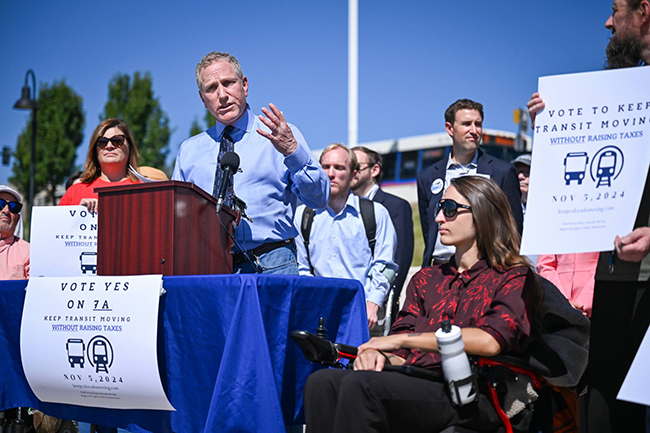With unprecedented wildfire events the new norm, could Boulder County see more loss of homes and lives?
30 May 2019
Clear and Present Danger
by Camille Wilson The 2018 Camp fire in California and the lives it touched will not soon be forgotten. Largely driven by extreme weather conditions—high winds and low humidity on drought-parched fuels—this monster fire consumed 153,000 acres, destroyed more than 14,000 residential structures and took at least 85 civilian lives. Beyond that, it offered another proof point toward a conclusion most fire professionals have drawn in recent years: record-breaking fires are the new normal. In Boulder County, Forest Service records show few fires between 1920 and 1988. However, in the last 30 years, fires—including Black Tiger, Olde Stage, Fourmile Canyon, Cold Springs and others—have destroyed more than 260 homes, burned more than 16,000 acres and threatened thousands of Boulder County residents’ lives and property. As unprecedented fires challenge the abilities and resources of agencies that fight them, many residents—especially those who don’t live in the mountains—still don’t acknowledge the threat to their homes from wildfire and don’t know the steps they should take to reduce their risk of loss.Changes in Fire Frequency and Behavior
Across the West, fire suppression, forest management and climate changes have led to conditions that are more conducive to extreme fire behavior, according to Chris Wanner, forest ecology supervisor for the City of Boulder Open Space and Mountain Parks. Most of Boulder County, particularly the land immediately west of Boulder, lies in an ecosystem dominated by low-elevation ponderosa pine forest that historically burned as often as every 15 to 30 years, he explains. These regular fires cleared the forest floor of fuels (pine needles, dead grasses, etc.) and killed most new small trees. Larger ponderosa pine trees have thick bark and self-prune their branches, so fires would burn at a low intensity and stay on the ground, leaving forests open with 20-25 large trees per acre. For the past 100-plus years, foresters had a policy of aggressive fire suppression, putting out most natural or human-caused wildland fires. “As we’ve suppressed fire, forest densities have changed dramatically. We now have areas in the county with 1,000-plus trees per acre,” Wanner says. “When the forest does burn, it can often be at a much higher intensity...spread very quickly, and can be very difficult to control.” Further contributing to the severity and complexity of wildfires is Boulder County’s growing population—census data shows an 8% increase during the last census interval, compared to 1.7% statewide 0.7% nationally—and a lengthening fire danger season thanks to climate change. Brian Oliver, wildland fires division chief with the City of Boulder Fire-Rescue, agrees that there are several factors at play. While he and many of his colleagues stop short of pointing to climate change as a primary cause, he says multiple studies and statistics do show clear patterns that things are getting worse. Specifically, the Boulder County Climate Change Preparedness Plan, a comprehensive document developed for the Sustainability Office, signals weather changes and an increased size of future fires. All 16 climate models used in the 2013 plan indicate rising temperatures, some more than others, with a median predicted increase of 2.7 degrees Fahrenheit by 2030 and 4.8 degrees by 2050. The 2018 plan uses the well-respected Keetch-Byram Drought Index paired with historic fire data to estimate an increase of 38 to 48% in total fire burn areas between 2020 and 2050. “For those of us in the fire world, the cards are stacked against us,” says fire management officer Seth McKinney of the Boulder County Sheriff’s Office.Risks Not Just for Mountains
McKinney says a recipe for red flag fire warnings from the National Weather Service includes drought conditions and low humidity for several days with a forecast of high wind. He compares these conditions to the Santa Ana winds in his home state of California acting like a hot electric blow-dryer being pointed at the hills, and says it sets up the highest potential for catastrophic fire. Jamie Carpenter, wildland fire operations specialist with Boulder Fire-Rescue, says a fire threatening homes in Boulder is not a matter of if, but when, and warns the entire west side of Boulder is at an especially high risk for fire. The leading cause of home ignition is from an ember rather than the flaming front in a large fire, and embers could land on homes if timber burns in the foothills above Chautauqua or Shanahan Ridge, for example. Carpenter says his team has robust plans for protecting west Boulder should one of these scenarios occur, but fire and embers are unpredictable.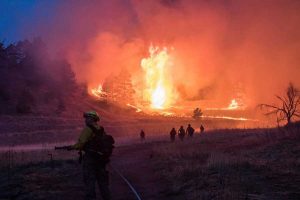
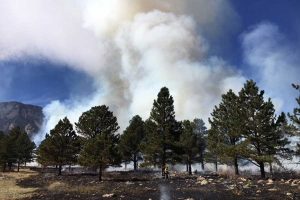
Emergency Preparedness for Evacuation
• Be sure you have signed up for emergency 911 notifications at www.boco911alert.com. • Create a disaster plan that includes all family members, pets and livestock and discuss its details. Check out www.ready.gov/wildfires to get started. • Check your homeowners insurance to ensure you have proper coverage. Designate a meeting spot outside your fire area and know how you’ll contact one another if necessary. • Create a “go bag” and emergency supply kit to include things such as car keys and important family documents, extra eyeglasses and prescription medications. • Secure the house and consider leaving lights on to make your home more visible. Leave hoses accessible. • Leave as soon as you can or when you are told. Go directly to the meeting spot in your emergency plan or to shelters designated by Office of Emergency Management if appropriate. Don’t forget your go bag!
Today’s New Normal: What Should Homeowners Do?
The work individual homeowners put into preparing their home and loved ones in advance of a fire is often the deciding factor in whether a home survives. With fire conditions becoming more frequent and devastating, arrival of emergency response organizations may be limited by the amount of equipment or personnel available, the location of water sources, difficult access, or the number and types of structures in the area. The Boulder Fire-Rescue Wildland Fire Preparedness Guide reminds readers it is ultimately the responsibility of residents to prepare themselves for an event like this. Resources are available online or through many city and county organizations. (See below for specific suggestions.) Justin Bukartek, MPA, CO-CEM is the deputy director at the Boulder County Office of Emergency Management and says it is a common misconception that if someone is in danger, help is on the way. “Yes, someone is coming,” says Bukartek, a former logistics officer in the U.S. Army before starting his career in emergency management. “Depending on the scope and scale of the emergency, it just might be a long time and you may only have a few minutes to get to safety. It’s difficult to have a clear-thought process in those circumstances, so have it planned out.”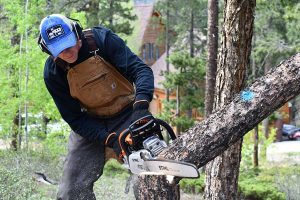
Private Property Fire Mitigation
- Every homeowner can reduce the ignition potential of their home by taking action. Working with your neighbors and community will further increase the effectiveness of your home’s defensible space.
- Understand that each home is different and no single checklist can mitigate risks for all properties. The guidelines below represent only a brief overview. Install an address marker in white reflective lettering on a nonflammable post at the edge of your driveway.
- Use fire-resistant materials to build, renovate or make repairs.
- Remove combustible litter on roofs and gutters and trim tree branches that overhang the roof and chimney.
- Create a fire-resistant zone that is free of leaves, debris or flammable materials for at least 30 feet from your home. This includes eliminating all combustible materials such as fire-prone vegetation, combustible patio furniture, umbrellas and lumber decking.
- Place wood piles and propane tanks away from the house.
- Unincorporated Boulder County residents should contact Wildfire Partners to learn about and apply for their innovative, award-winning home mitigation certification program. Other residents, contact Boulder Fire-Rescue or your local municipal fire department for a free on-site evaluation of your property.






